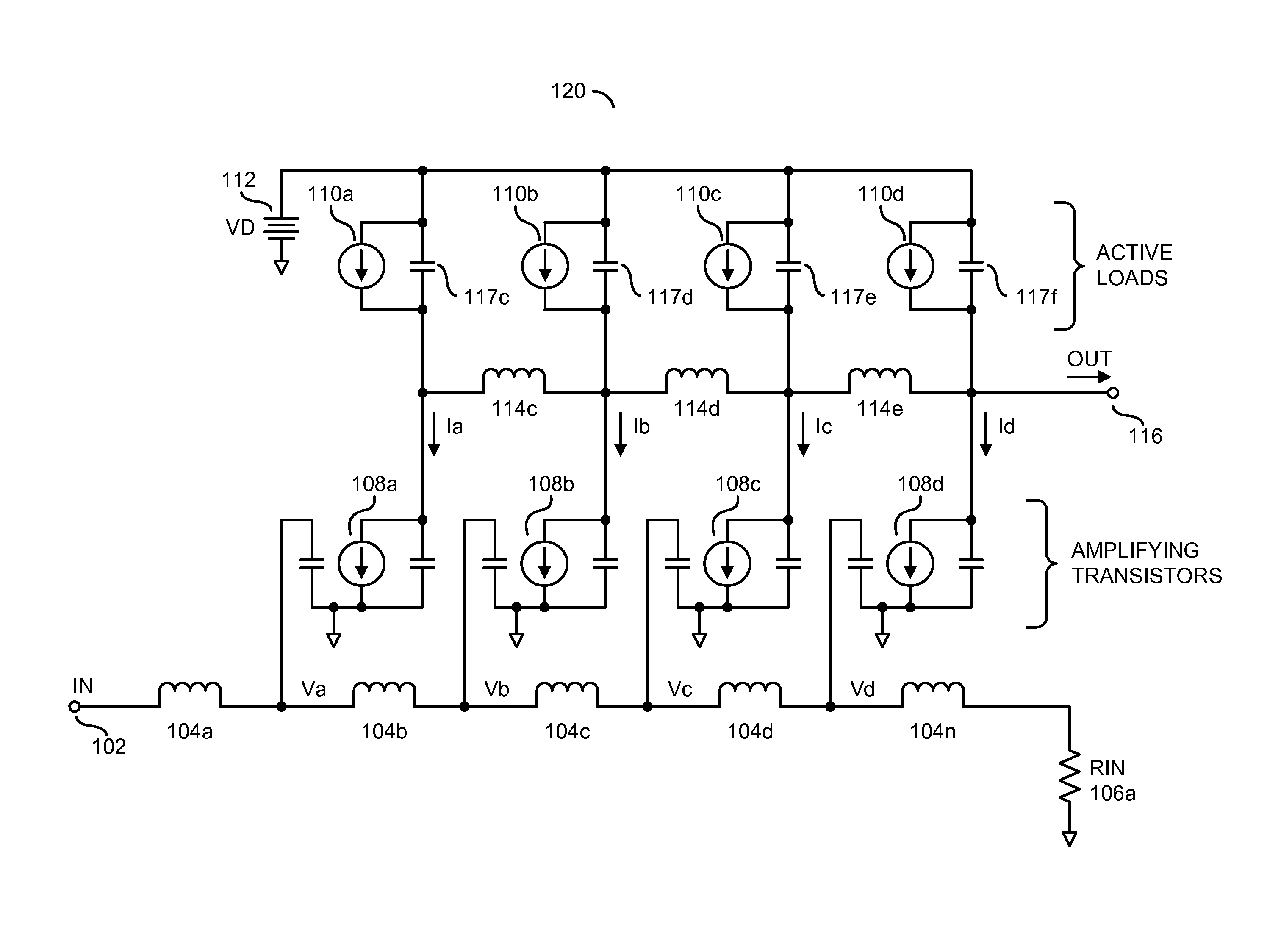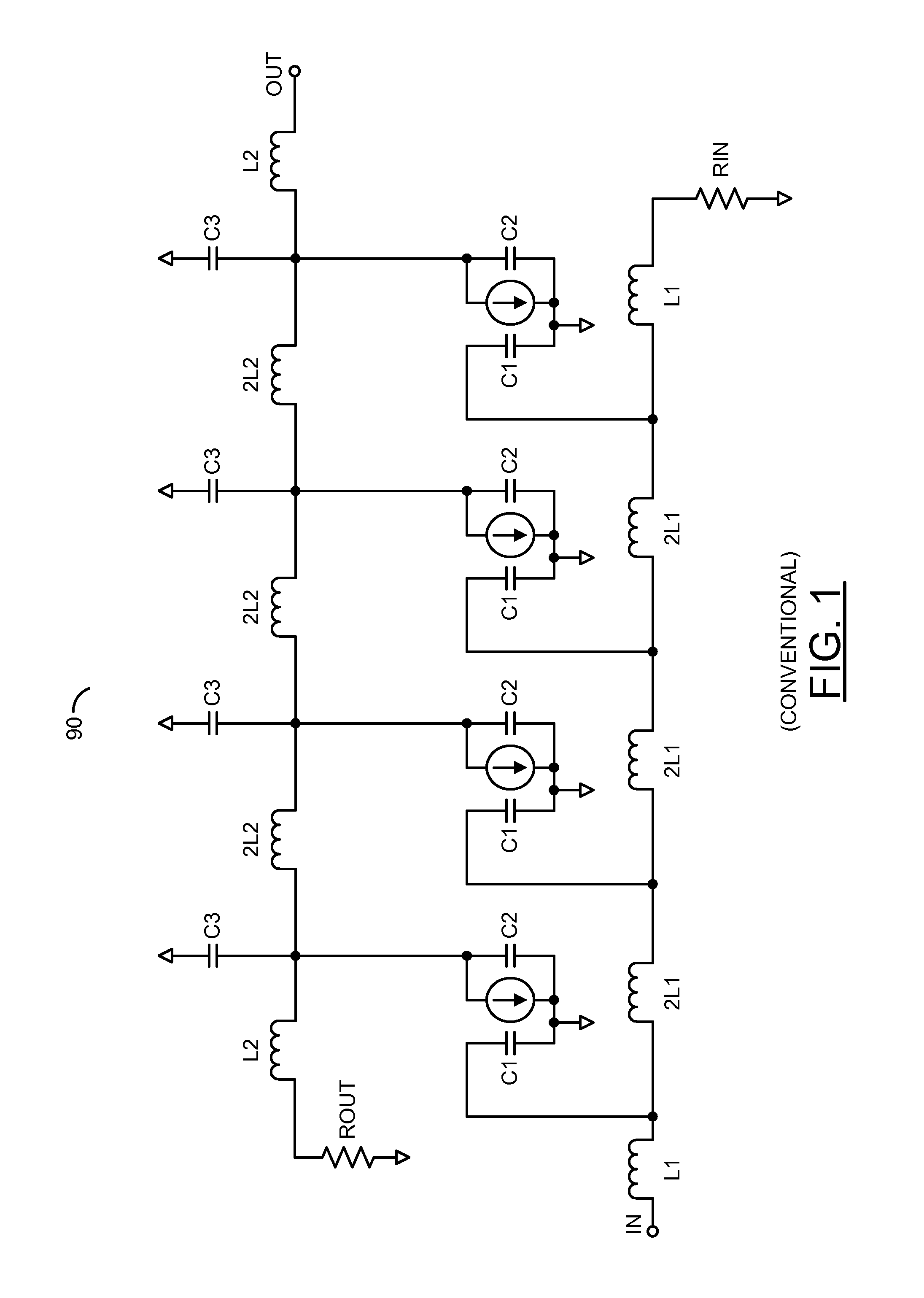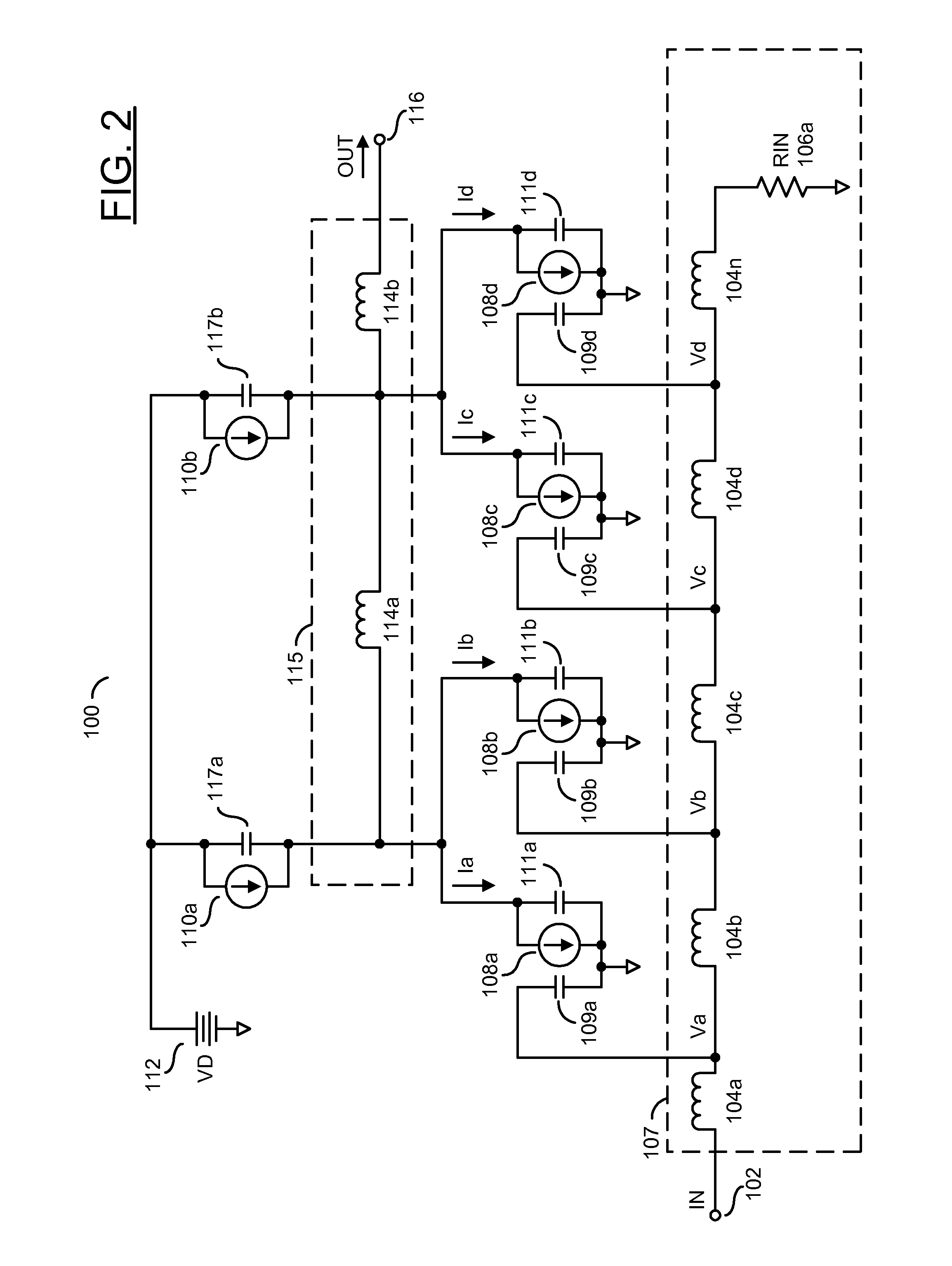Distributed transconductance amplifier
a transconductance amplifier and distributed technology, applied in amplifiers, amplifiers with coupling networks, amplifiers with semiconductor devices/discharge tubes, etc., can solve the problems of large circuit board area, inability to implement, and high cost of external inductors, and achieve small die area and high transconductance
- Summary
- Abstract
- Description
- Claims
- Application Information
AI Technical Summary
Benefits of technology
Problems solved by technology
Method used
Image
Examples
Embodiment Construction
[0018]Embodiments of the present invention generally relate to non-uniform distributed amplifiers for transconductance applications. Transconductance amplification may amplify and convert an input voltage into an output current delivered into a load. The distributed amplifiers generally comprise multiple (e.g., four or more) non-uniform sections distributed between an input transmission line and an output transmission line. An impedance of the input transmission line may range from a few ohms (e.g., 5 ohms—Ω) to dozens of ohms (e.g., 50Ω) or more (e.g., 200Ω). An impedance of the output transmission line generally ranges from a few ohms (e.g., 10Ω) to multiple ohms (e.g., 50Ω). The amplifiers may include paired transistor outputs and one or more active current sources. The active current sources may be fabricated concurrently with the transistors and attached at the output nodes of the transistors to provide bias currents. The active bias circuits may be inserted at one or more node...
PUM
 Login to View More
Login to View More Abstract
Description
Claims
Application Information
 Login to View More
Login to View More - R&D
- Intellectual Property
- Life Sciences
- Materials
- Tech Scout
- Unparalleled Data Quality
- Higher Quality Content
- 60% Fewer Hallucinations
Browse by: Latest US Patents, China's latest patents, Technical Efficacy Thesaurus, Application Domain, Technology Topic, Popular Technical Reports.
© 2025 PatSnap. All rights reserved.Legal|Privacy policy|Modern Slavery Act Transparency Statement|Sitemap|About US| Contact US: help@patsnap.com



